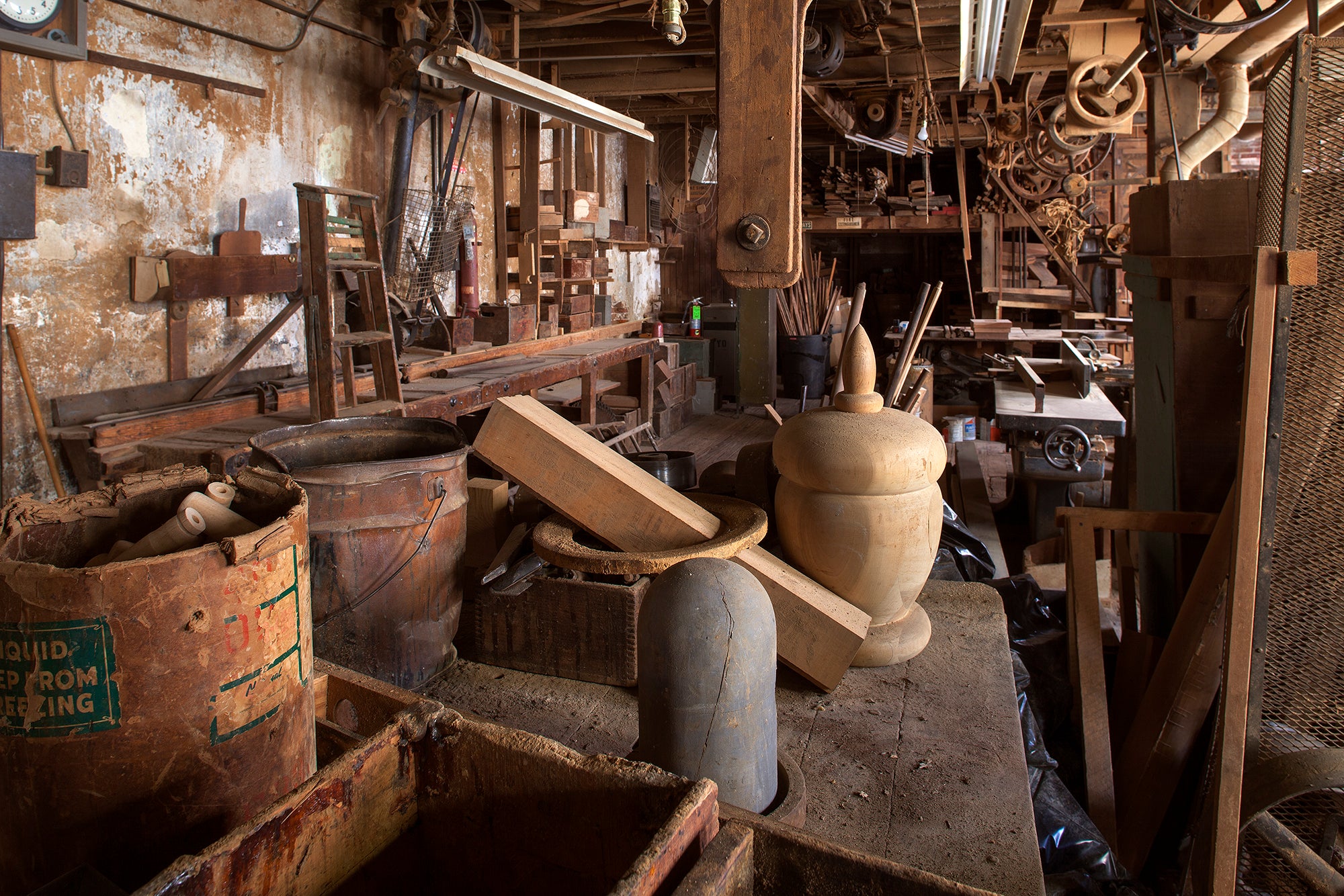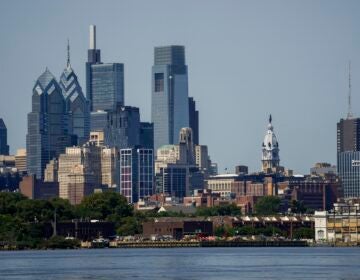Inside the Society Hill library where ‘hidden’ Philadelphia lives in 19th-century grandeur

Philadelphia’s popular landmarks tell a story about the city. They serve as a physical embodiment of a familiar history. Independence Hall shows the birth of a nation. The art museum steps remind the city of a big break into the movies. Pat’s and Geno’s stand off, quite literally, as a playful picture of South Philly culture. The city, though, also has a hidden history, and it reveals itself in our buildings and infrastructure.
The Athenaeum of Philadelphia, a membership library and landmark in itself, is, until April 13th, host to a free exhibit called Philadelphia: Finding the Hidden City. Featuring photographs by Joseph E.B. Elliot, the show offers a different picture of the city’s past, one that highlights a more rustic and forgotten lifestyle. The photos come from a book of the same name, written by Nathaniel Popkin and Peter Woodall, and depict unfamiliar spaces all over the city: an overgrown garden on top of the Reading Railroad, a bedroom for rabbis with peeling walls, an abandoned water filtration center with no water.
Peter Conn is the Athenaeum’s executive director. An internationally renowned literary scholar and author who was a professor of English and education at the University of Pennsylvania before joining the institution in 2016, Conn says that each disparate image fits equally within the 219 S. 6th Street library’s mission. He wants exhibits that show Philadelphia’s built environment in all of its eclecticism, past and present.
“We’re looking for ways to put in front of people, preservation issues, or in this case, frequently not preservation issues,” says Conn, who once served as a literary advisor to Oprah Winfrey’s massively popular book club and also at one point in the 1980s and ’90s, helped the Philadelphia Superintendent of Schools develop curriculum.
Conn is walking around the exhibit, talking next to a photo of the Mill Creek Sewer. He explains why the Atheneum exists today, and how it came to be.
The History of the Athenaeum
Many stories about good ideas begin the same way: with a need. Benjamin Franklin sees that lightning kept setting homes on fire. He creates the lightning rod. His brother complains of kidney stones? Franklin creates the flexible urinary catheter.
And in 1731, Franklin saw that not enough people could afford to buy books, or easily find the materials they wanted to read. So he created a space where members could pay a relatively affordable fee and in exchange, use books. He called it “The Library Company of Philadelphia.” Over the next century, hundreds of membership libraries following this model began to pop up across the colonies.
And in 1814, a second one popped up in Philadelphia, calling itself “The Athenaeum.” Led by Chief Justice William Tilghman, the founders of the membership library started with a mission of “procuring newspapers, pamphlets, books, maps, charts, and of collecting historical and other monuments connected with the history and antiquities of America and the useful arts, and generally to disseminate useful knowledge.”
Conn breaks away from the story for a moment.
“You can find a mission statement on a website, but those things — and I don’t care if I’m on the record — are often a little bit abstract and a little vague,” he says. “We look for exhibits that tie into Philadelphia as a ‘built city.’ We have our architecture archive; we have a lot of landscape architecture, we have a lot of books on those subjects.”
It makes sense, then, that the Athenaeum is an architectural landmark itself. After sharing a space with the American Philosophical Society for many years, the library moved to its own space right across the street from Washington Square in 1845. John Notman drew up the three-story space for the library after winning a design competition against other notable 19th century architects.
While the building was certainly pretty, and its collection impressive, it was going to have trouble competing with the storm of knowledge that was about to crash down onto American shores: Public libraries. Thanks, Carnegie.
As the 1800s went on, more and more public libraries opened, and more and more membership libraries closed. Today, only a dozen or so membership libraries exist. The Athenaeum is one of them.

Keeping 19th-century library relevant to a 21st-century city
So, how did it survive? Conn says it’s because he doesn’t see the Athenaeum as in competition with public libraries. He’s a tremendous supporter of public libraries and sees them as “indispensable institutions for American democracy.” In fact, today, the Athenaeum is open and free to the public for all exhibits. Non-members just can’t check out books.
“I don’t know if you’re going to find anything here that you won’t find in a free library to be perfectly frank,” he says. “We run programs; they have programs. We have archives; they have archives. We have books; they have books.”
Conn does admit that their archive is unique. You may be able to find architectural books and some archival materials in other libraries, but that’s not the same thing as having an extensive collection of original drawings. Part of what makes the library special, too, is a focus on connecting historic architecture to contemporary life.
“We’re also trying to reach into Philadelphia today, not just Philadelphia yesterday,” says Conn.
For example, the institution has hosted events about the 19th-century architecture of Eastern State Penitentiary and today’s problem of mass incarceration.
“We’re mixing architecture and preservation in a familiar sense with an attempt to make this place a site where important contemporary issues are discussed,” says Conn.
The institution counts more than 1,000 members; a fact that Conn says must indicate the Athenaeum is “offering something that [members] aren’t getting elsewhere.”
The next exhibit and symposium will focus on Paul Cret, a France-born Philadelphia architect who designed the Rodin Museum, the old Barnes Foundation in Merion and the Benjamin Franklin Bridge.
Conn walks up to the second floor and through the library’s two massive reading rooms. Behind glass cases, there’s old scientific journals, architecture sketches, Carl Hiaasen novels, Harry Potter on tape, a book called “Where are the Women Architects?” He points out that almost zero remodels of the library have occurred since 1845; only restorations.
“We are a link to Philadelphia’s past,” he says. “We are a model of a library that doesn’t exist very broadly anymore. And over and over again, our culture, in its indifference to its own history and past, reminds us that continuity is as important as novelty, and perhaps even more important.”
WHYY is your source for fact-based, in-depth journalism and information. As a nonprofit organization, we rely on financial support from readers like you. Please give today.












